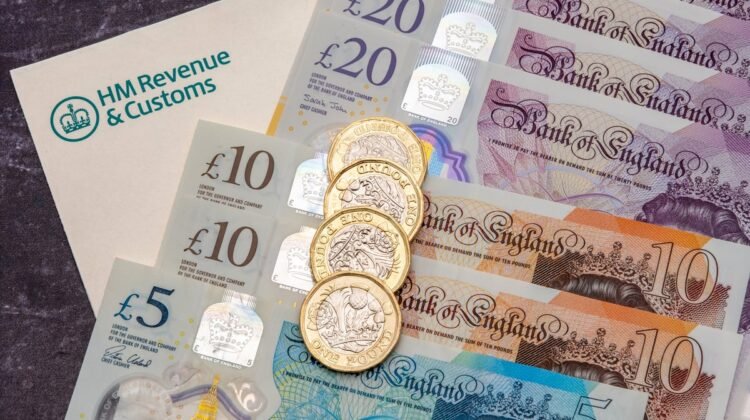
Making Tax Digital: A new tax system is coming – here’s what the self-employed and freelancers need to know
Millions of sole traders and landlords have just months to prepare for massive changes to the tax system that take effect next year.
From 6 April 2026, Making Tax Digital for Income Tax Self Assessment (MTD ITSA) will apply to sole traders and landlords whose combined gross income from self-employment and/or property exceeds £50,000 a year. If this applies to you, you’ll need to keep digital records and use HMRC-compatible software to submit four quarterly updates and then a ‘final declaration’ to HMRC each year. This will replace the current self-assessment tax return.
The Government claims MTD will “modernise the tax system” and “reduce the tax gap”. But critics says HMRC’s communication on the subject has been woefully lacking, with the new regime set to cost freelancers and landlords time and money.
Manase Mtopa, head of UK at accounting service Hnry, says: “Filing of taxes used to be a free service completed annually, so introducing the need to use software quarterly will invariably introduce costs to the taxpayer. The self-employed are often paying for a business bank account and accountant already so this is an unwelcome cost.”
Whatever your view, MTD is on its way and it’s best to prepare now.
Who is affected by MTD?
If you’re a sole trader and/or landlord with a qualifying income of more than £50,000 for the 2024/25 tax year, you’ll need to comply with MTD from 6 April 2026. The threshold falls to £30,000 from April 2027, and then to £20,000 in April 2028.
MTD has already been introduced for VAT-registered businesses. These firms will have a headstart when complying with MTD IT rules – but it will be a major change for other sole traders and landlords.
I’m a sole trader. What do I need to do?
From April 2026, everyone who falls under MTD will need to make quarterly digital submissions to HMRC.
These will include a summary of income and expenses for each quarter, with deadlines on the 7th of the month after the quarter ends. No tax is calculated or payable at this stage – it’s just reporting.
By 31 January following the tax year end (i.e. 31 January 2028 for the 2026/27 tax year), a ‘final declaration’ becomes due. This will be similar to the current self-assessment return, but will be pre-populated with the income and expenses from the quarterly updates already filed. However, those entries will need to be adjusted for accounting and tax purposes – for example, disallowing elements of private use or capital expenditure.
Get a free fractional share worth up to £100.
Capital at risk.
Terms and conditions apply.
ADVERTISEMENT
Get a free fractional share worth up to £100.
Capital at risk.
Terms and conditions apply.
ADVERTISEMENT
The payment deadline dates for income tax will remain the same as under the current self-assessment system: 31 January and 31 July each year.
.jpeg)
What software do I need?
All submissions must be made through MTD-compatible software. You can either use “bridging” software which submits data from spreadsheets to HMRC, or full-MTD compatible software which does everything.
A list of compatible software providers is available on the Gov.UK websiteincluding free and paid-for offerings from firms such as Coconut, 123 Sheets, FreeAgent and Xero.
Arjun Kumar, founder of Taxd, says: “There’s a misconception that you have to use expensive, fully integrated software for this. The truth is, you can still use a simple spreadsheet for your digital records.
“However, software is the smart choice. It can connect directly to your accounts, automatically categorising everything and keeping you audit-ready. For those who are wary of that level of integration, ‘bridging software’ is the perfect middle-ground, it simply sends your quarterly data to HMRC without needing direct access to your books.”
Are taxpayers ready for the new regime?
A survey by accounting software firm FreeAgent found a worrying lack of knowledge about MTD – almost two in every five (39 per cent) survey respondents said they had never even heard of it.
Jon Martingale, head of product management at FreeAgent, says: “This lack of clarity seems to stem from the complexity of the changes and the varied ways people access information. While many are turning to software providers or accountants for support, our data shows that nearly 60 per cent still feel they haven’t had enough guidance to fully understand what’s coming.”
Despite doing a thoroughly dismal job of publicising MTD, HMRC is introducing a points-based penalty system for non-compliance from April 2026. Each late quarterly submission earns one penalty point, with four points equalling a £200 penalty. Points expire after 24 months if compliance improves.
“This system is more lenient than immediate fines, especially for occasional mistakes, and gives taxpayers a chance to improve. However, for those who consistently miss deadlines, the fines can add up,” says Brad Wilkinson at accountancy practice Ascendis, “Whether they’re ‘fair’ is subjective. Some argue that the system is burdensome, especially for landlords or sole traders with simple tax affairs. Supporters say it encourages better compliance and brings tax in line with modern digital standards.”
Sole traders and landlords can sign up to a HMRC pilot programme now – this will aid in getting to grips with the new system before April.
When investing, your capital is at risk and you may get back less than invested. Past performance doesn’t guarantee future results.








